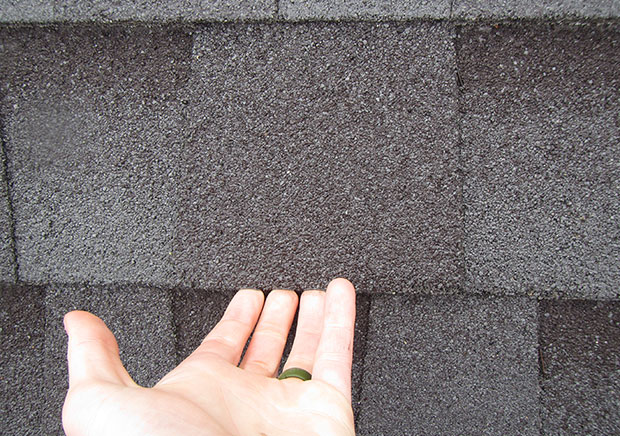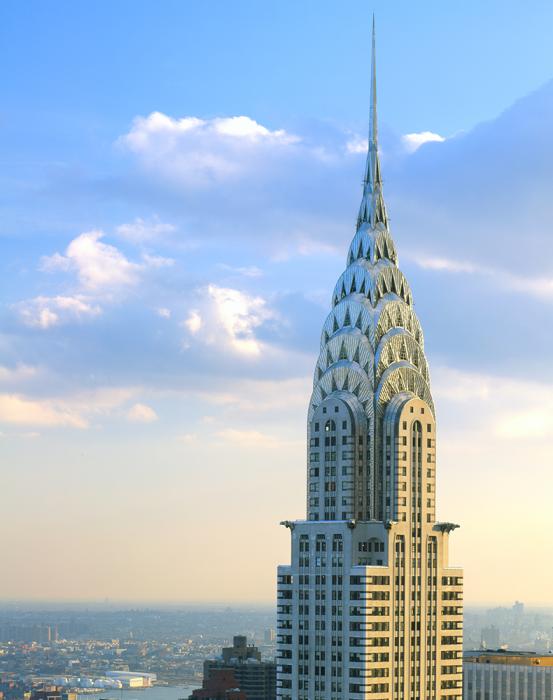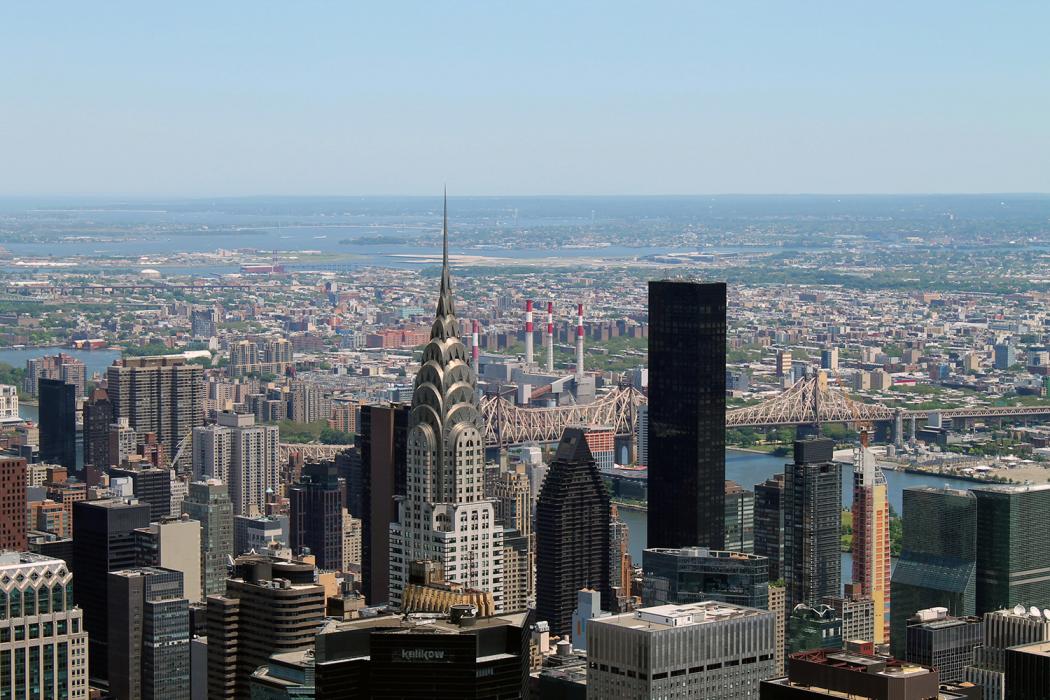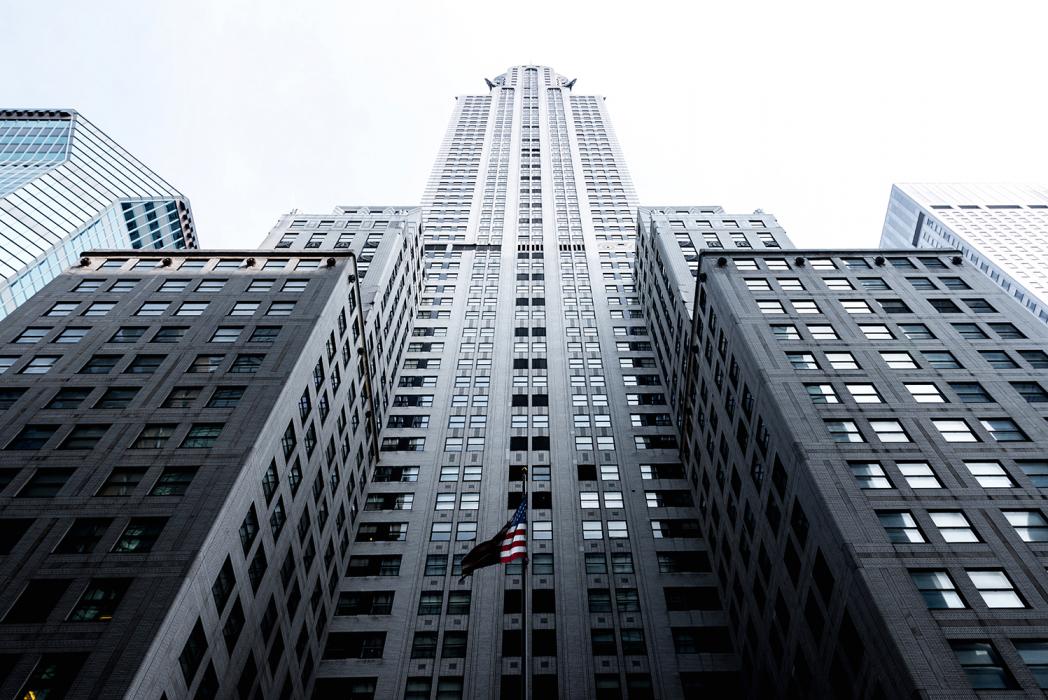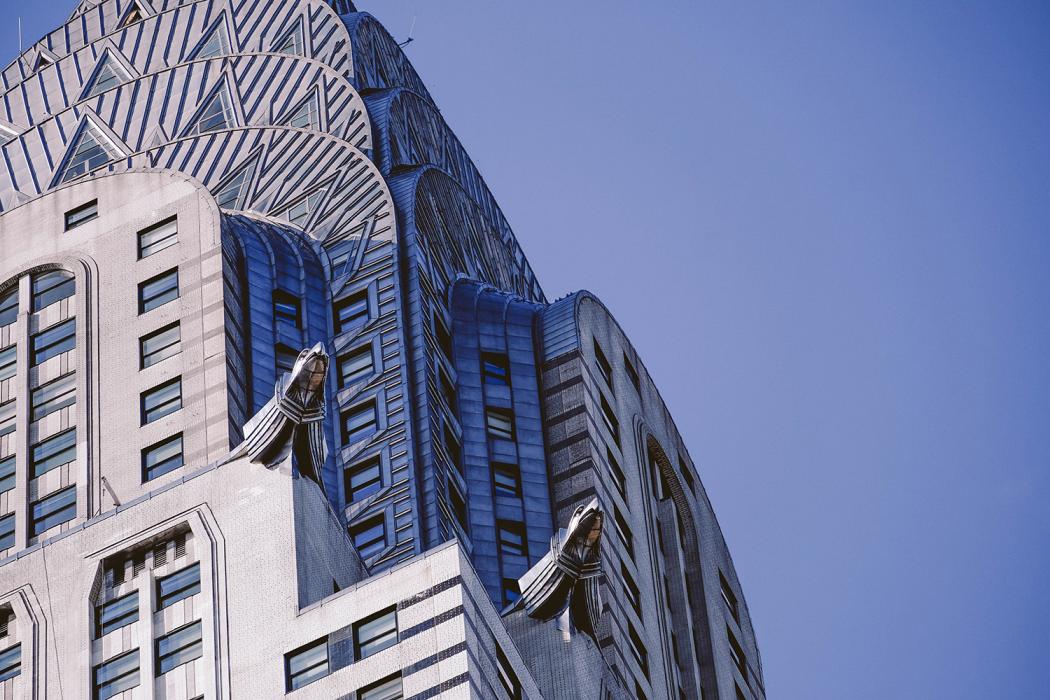
Chrysler Building
In the early 2000’s the Chrysler Building's façade was in need of repair after decades of exposure to weather and other harmful elements.
Restoring An Architectural Icon
Designed by William Van Alen and opened in 1930, the Chrysler Building is a stunning example of Art Deco architecture. Standout features include the large, three-story tall entry portals, ornamentation in automobile motif and the iconic stainless steel spire. At the building base, the first floor is faced in dark emerald Shaston granite, while the floors above are white Georgian marble. Above the base the facades are a combination white glazed brick and bands of the marble. When completed, the Chrysler Building was the tallest building in the world, and though it lost that title long ago, its presence continues to dominate the New York City skyline.
We devised a two-year, fast-track restoration plan for the building’s façade from grade to the spire. We also designed restorations for many of the street-level storefronts, which were phased over a ten-year period. The building is both an individual New York City landmark and listed on the National Register of Historic Places.
Highlights
- We designed repairs for the stainless steel, sheet metal spire, which suffered from long-term systemic leaks. Our team used rope access to perform both investigation into the leaks and the actual repairs. Once we correlated the origin of the water infiltration, we design repairs to stop the leaks for the first time in decades. These repairs retained most of the stainless steel sheet metal cladding and helped to extend the life of this historic fabric.
- We designed a complete façade restoration that required 75 scaffold drops. Our team accessed the scaffolding to perform both initial and final inspections. The façade restoration included replacing window lintels and shelf angles, stone dutchman repairs, brick replacement, sealant replacement and mortar joint repointing.
- We designed replacement storefronts that following the approved LPC masterplan. Changes made over the years prior to the passage of landmark laws had altered many of the storefronts beyond recognition. The replacement storefronts brought the street level facades back to their original glory, while providing ADA access.
- The landmarks commission approved all repair work.






